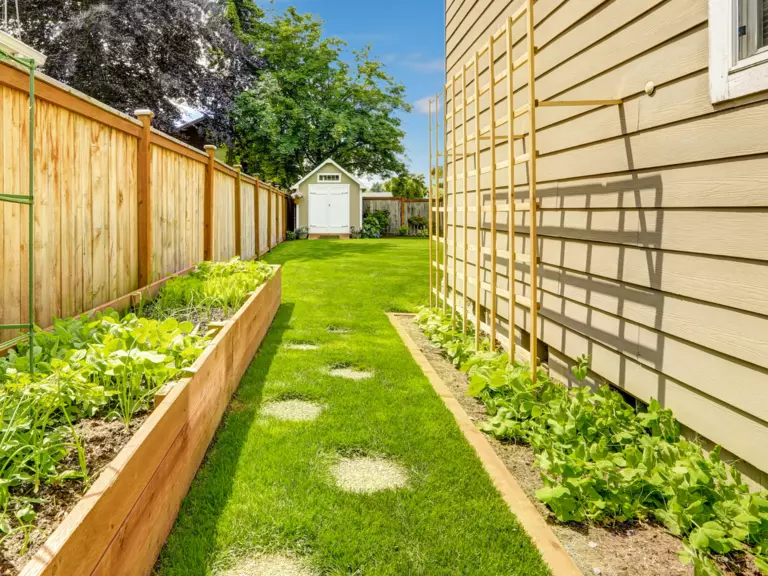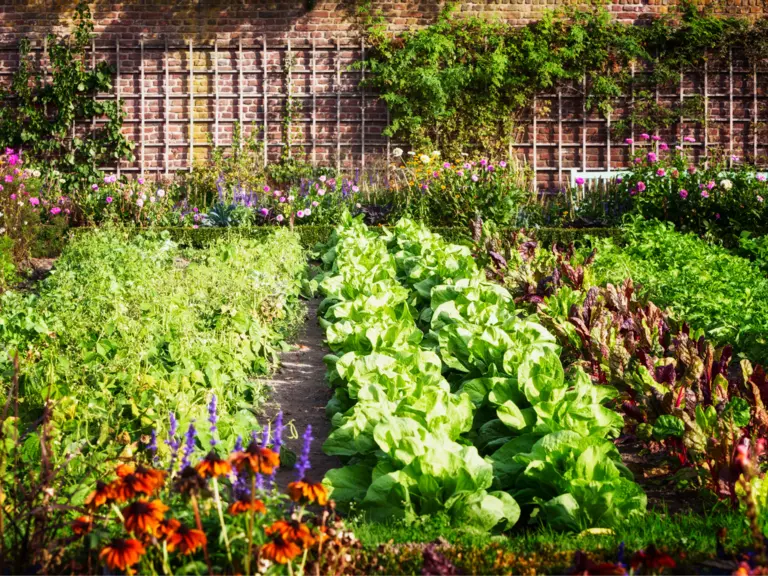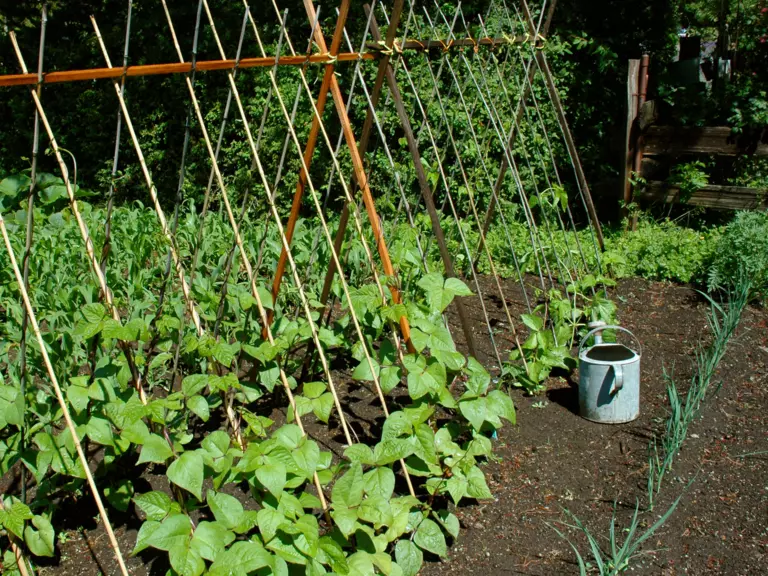As a gardener, you start to pay more attention to the weather patterns in your area and you get a good feel for the local climate.
Every garden has its own distinct microclimate with differing temperatures, light exposure, wind, and humidity compared to the surrounding climate. Because of this, it is possible for two neighboring gardens to have significantly different growing conditions and plant growth rates.
By learning more about the different growing conditions and microclimates within your garden and adjusting your gardening techniques, you can use those differences to your advantage. Discover the areas of sun and shade in your garden so you know the best places to plant. Know where the wet locations are and where the most wind passes through. Find a nice rocky area for your heat-loving plants and you will have better results when it comes time to harvest.

Climate vs Microclimate
Climate is the average weather pattern of an area over a long period of time.
Microclimates are smaller areas that can be warmer or cooler, have more or less light, have differences in the amount of wind, and have different humidity than the expected averages of a larger climate area.
Your garden's microclimate can have a massive effect on which plants you can grow and which plants thrive in your garden. By spending some time thinking about the microclimate in your garden, you can greatly increase your garden's success.
Make the Most of Your Garden's Microclimate
Think of the landscape around you and how the geographical features may impact your garden. There may be a difference in sun exposure, slope, soil, vegetation, and proximity to cities, forests, mountains, valleys, coastlines, and bodies of water. These features can all affect the temperature, amount of light, wind, and moisture in your garden, and influence how well your plants grow.
Nearby homes or large buildings may influence the microclimate in your garden. It is possible for these structures to provide shade for your garden during the day and they may also block wind and reduce evaporation. They may provide afternoon shade which can be beneficial to plants that are sensitive to harsh afternoon sun.
Likewise, if homes or buildings are on the north side of your garden, then they may reflect more light and heat into the garden. It all depends on their proximity to your garden and their placement in relation to the sun.

Let's discuss how you can optimize your garden's microclimate by considering the four major factors influencing it: temperature, light, wind, and moisture.
Temperature is the most important factor in determining what plants will grow in your garden as well as how fast they will grow. Plants start growing when the soil is above 40 degrees F. Most vegetables need the temperature of the soil to be between 65 and 75 degrees F.

A plant's growth is largely determined by the number of days it spends above a certain temperature. Changing a plant's average daily temperature has the most profound effect on the speed of its growth. If you are looking to improve your garden, focus on temperature first.
-
Walled gardens can be created to warm up an area for a garden. The stone or brick walls can absorb heat during the day and then release it at night. This allows for a longer growing season.
-
Nights are cooler at higher elevations so to have better results with tender plants you can put large rocks and boulders near them in order to absorb heat during the day and then release it at night.
-
Cold air tends to settle in low areas. Frost pockets or frost rivers can form in these low areas and destroy sensitive plants. If this is happening in your garden you can choose to put frost-tolerant plants in these locations.
-
Higher spots are warmer, put tender plants there to protect from frost damage.
-
Take advantage of lower temperatures and shade, make it work for you by putting lettuce in cooler areas that are shaded from the afternoon sun.
-
If you have a fenced garden, the North side of the garden can have the brightest light. On the south side there is shade cast by the fence into the garden. When the sun rises in the east, it casts shadows in the west. As the sun climbs shadows are cast to the north. The areas of the garden in the south end are in shadows. Likewise, as the sun sets in the west shadows cast to the east in the south end of your garden.

Use light to your advantage
Plants are categorized based on sun vs shade tolerance. Some plants require at least 8 hours of full sun daily, while others wilt and die in only a few hours of direct sunlight. Most plants however can handle a range of sun and shade.
Map the garden's sun exposure throughout the day. Also, make note of changes throughout the growing season. Record areas that are full sun, part sun, and shade. You can use your garden journal to record this information and then refer back to it when you are planning your garden.

Plants that require full sun will grow best in areas that receive at least 6 hours of direct sunlight daily. If you have a garden that is mostly in the shade, you can still grow plants that require full sun by moving them to a location that receives more light.
Control wind
The wind in a garden is both good and bad. A little bit of wind is necessary to help encourage optimum growth. Plants respire much like we do, except instead of requiring oxygen, they require carbon dioxide. As a plant grows it uses up the available carbon dioxide in the area and replaces it with oxygen. With no wind, this C02 pools and the plant's growth rate slows. A little bit of wind brings in a breath of fresh C02.
On the other hand, high winds can destroy plants as fast as freezing temperatures. When the temperature drops, even a little wind can have a windchill effect similar to a frost.
Put plants that need less moisture, like lavender, in a windy location. They can also act to slow down the wind for your other plants. Trees can also provide windbreaks for your garden.

If you have a slope with a lot of wind, you can put items on the slope to slow down the airflow. Bales of straw, rocks, trees, and other hardy plants can be used to block the flow of air.
In your garden, you can use wind to cool off plants that are sensitive to heat. If you have a garden that is in full sun, you can put plants that are sensitive to heat in the windiest areas. This will help to cool them off.
Add moisture where you need it
Exposed soil has a high evaporation rate compared to shaded soil which loses moisture at a much slower rate. Densely packed plants shade the soil and reduce evaporation. When plants are young and their leaves are not very big, soil evaporation is a huge factor in how often they have to be watered. This is why you see so many gardening experts recommending mulch. Loosely packed mulch reduces evaporation.
By planting more vegetation in your garden you can help improve water retention and increase humidity. This can help to cause cooler temperatures as well.

Having an area of lawn near your garden can help to cool the garden during warm days. This may be great for some plants and worse for others. Where we live in the Pacific Northwest, summer cucumbers are not happy when planted near the lawn since it is way too cool for them.
If you live near large bodies of water, you can have more stable temperatures since water acts as a buffer. Hot or cold temperatures can be less intense in these areas.
Successful Gardening
Plants will grow differently in different microclimates and some plants will not grow at all. For a more productive garden, learn more about your garden's microclimate and how to use it to your advantage.
Understanding the microclimate in your garden is the first step to deciding where to put each plant. The locations that you choose can have a great effect on how well they grow. The amount of sun, wind, and moisture, as well as the temperature in your garden, are all very important factors that influence the growth of your plants. Knowing what your plants need and then figuring out what you can do to adjust conditions in your garden to meet those needs will help you to be more successful.







